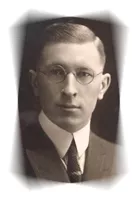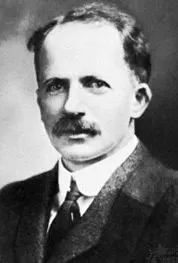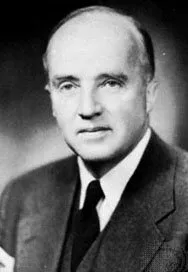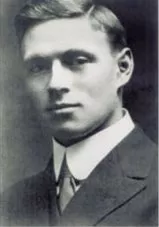Who discovered insulin?

Insulin was discovered by Sir Frederick G Banting (pictured), Charles H Best and JJR Macleod at the University of Toronto in 1921 and it was later purified by James B Collip.
It was one of the greatest medical breakthroughs in history, which went on to save millions of lives around the world and triggered a century of diabetes discoveries. Here we take a look at the journey that got us there.
7 November 1920 – great minds come together
By 1920 scientists had already pinpointed clusters of cells in the pancreas, called islets, that produce insulin and worked out that it’s these cells that are destroyed in type 1 diabetes. Understanding the cause of type 1 diabetes meant researchers now had a chance of treating the condition. Attempts had been made to extract insulin from ground-up pancreas cells, but they’d all proved unsuccessful. The challenge was to find a way to extract insulin from the pancreas without it being destroyed in the process.
In October 1920, Frederick Banting – a Canadian surgeon – read an article that suggested insulin-producing cells in the pancreas are slower to deteriorate than other pancreas tissue. Banting realised that this might allow for the removal of insulin by breaking down the pancreas in a way that would leave just the cells that produce insulin intact.
But Banting wasn’t a scientist and knew he couldn’t test his theory alone. On 7 November 1920 he paid a visit to a top professor at the University of Toronto, John Macleod. They put their minds together and began to work on a plan.
17 May 1921 – experiments started
Macleod provided Banting with the labs needed to conduct their experiments and brought in a research student, called Charles Best, to help out. Best specialised in testing blood to check glucose levels. This would be the way they would know whether their insulin extracts were having any benefit.
On 17 May 1921 Banting, Best and Macleod first got together to begin their research and set about figuring out how to remove insulin from a dog’s pancreas. Their method involved tying off the pancreatic duct to kill off other substances in the pancreas that would destroy insulin, but leave the islets intact. The remaining extract would then be given to other dogs who didn’t produce any of their own insulin because their pancreases had been removed to work out its effects on their blood sugar levels.
10 November 1921 – first experiments were successful
Progress was initially slow and while many of their experiments failed, Banting and the team saw regular drops in blood sugar levels as a result of their extract, and were confident they were on to something big. By November, they’d successfully treated a dog with diabetes with their insulin extract for 70 days.
12 December 1921 – a new team member and a new, purer insulin
James Collip, a biochemist, joined the group to work on purifying insulin so it would be safe enough to be tested in humans. With his help, a more concentrated and pure form of insulin was developed, this time from the pancreases of cattle.

|

|

|
11 January 1922 – insulin was first used to treat a person with diabetes
In January 1922, Leonard Thompson, a 14-year-old boy dying from type 1 diabetes, became the first person to receive an injection of insulin. Within 24 hours, Leonard’s dangerously high blood sugar levels dropped, but he developed an abscess at the site of the injection and still had high levels of ketones.
Collip worked day and night on purifying the extract even further, and Leonard was given a second injection on 23 January 1922. This time it was a complete success and Leonard’s blood sugar levels become near-normal, with no obvious side effects. For the first time in history, type 1 diabetes was not a death sentence.
3 May 1922 – the word 'insulin' used for the first time
On 3 May 1922, Macleod announced the discovery of insulin to the international medical community, presenting a paper called 'the effects produced on diabetes by extracts of pancreas,' at a meeting of the Association of American Physicians in Washington. It was the first time the team used the word “insulin”. The audience gave the researchers a standing ovation.
23 January 1923 – "insulin belongs to the world"
On 23 January 1923, Banting, Collip and Best were awarded U.S. patents on insulin and the method used to make it. They all sold these patents to the University of Toronto for $1 each. Banting famously said, “Insulin does not belong to me, it belongs to the world.” He wanted everyone who needed it to have access to it.
15 October 1923 – insulin produced on a mass scale
As news of insulin’s success spread, demand rocketed. The researchers set about improving their techniques for the production of insulin so it could be made in much larger quantities. Eli Lilly become the first manufacturer to mass produce insulin and in October 1923 they began shipping the first commercial supply of insulin.
25 October 1923 – a Nobel Prize win
In recognition of their life-saving discovery, Banting and Macleod were jointly awarded the 1923 Nobel Prize in Physiology or Medicine. Banting split his half of the Prize money with Best, and Macleod split the other half of the Prize money with Collip.
1934 – Diabetes UK was founded to improve access to insulin
What was then known as the Diabetic Association was set up in 1934 by novelist HG Wells and Doctor RD Lawrence – both of whom had type 1 diabetes. RD Lawrence’s life had been saved by the discovery of insulin and their mission was to ensure that everyone with diabetes in the UK had access to this breakthrough treatment, whatever their financial situation.
One year later, we awarded our first research grant and over the past 85 years your support has allowed our scientists to make more life-changing discoveries. We’ve funded the first ever insulin pen and insulin pump, transforming how we deliver insulin and making living with the condition dramatically simpler. We’ve helped to prevent sight loss and roll out national eye screening programmes. We set up the first diabetes foot clinic in the UK, helping to reduce amputations. And we're putting type 2 diabetes into remission thanks to our DiRECT trial.
With more lives to change than ever before, we can’t stop now. We have more research to fund and more lives to improve. Help us to keep breaking new ground for people with diabetes.
